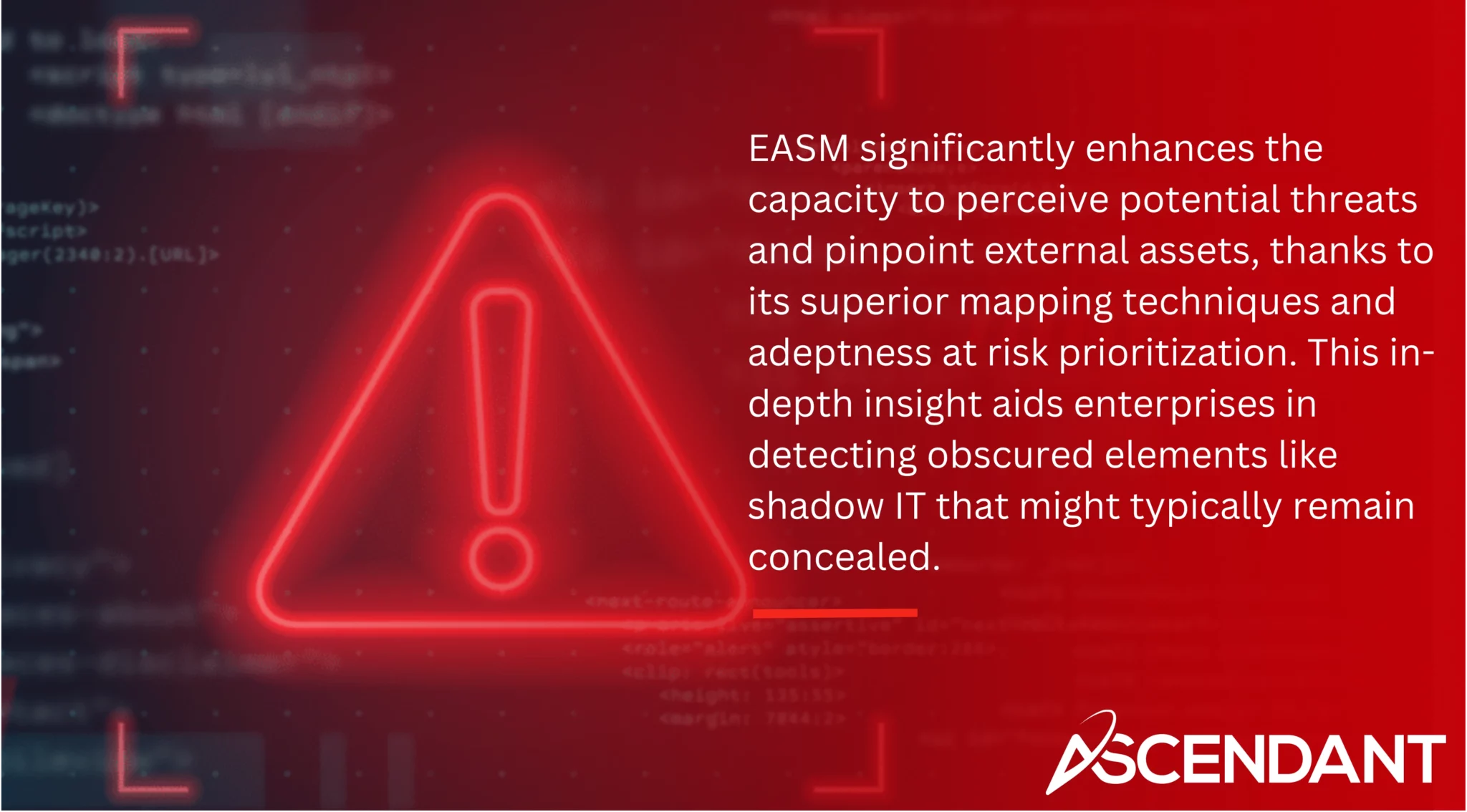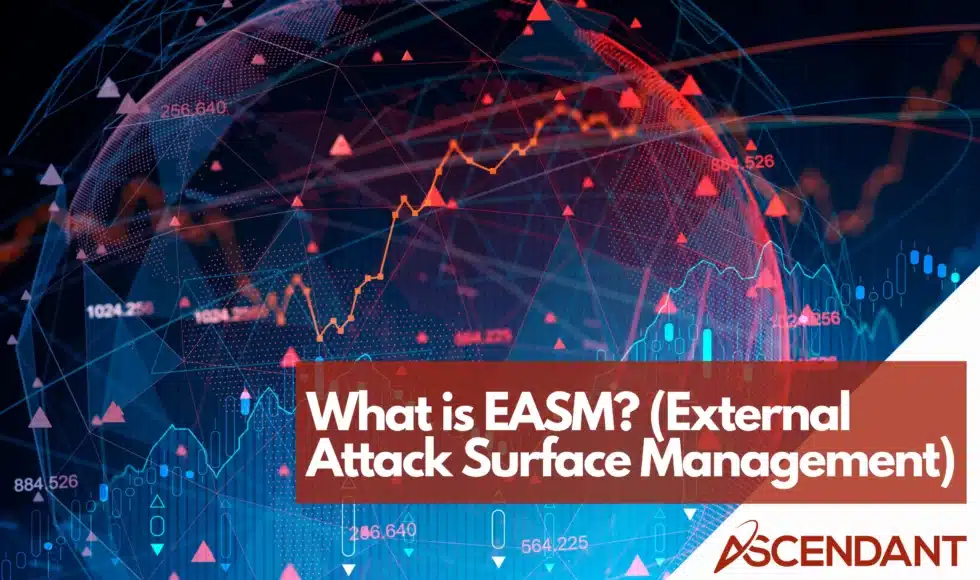External Attack Surface Management (EASM) helps organizations identify and protect digital assets exposed to the internet. It reduces risks from cyber threats like hackers. This article will cover what EASM is, its benefits, challenges, key features, and more.
Key Takeaways
- External Attack Surface Management (EASM) enhances visibility and control over digital assets exposed to the public, facilitating proactive threat hunting and risk mitigation.
- Key features of effective EASM solutions include automated asset discovery, continuous monitoring, and risk-based prioritization, which optimize vulnerability management efforts.
- Integrating EASM with broader security strategies, including AI and automation, is crucial for improving threat detection, response capabilities, and managing third-party vendor risks.
Understanding EASM
The practice of External Attack Surface Management (EASM) is centered around the detection, examination, and administration of a corporation’s public internet-facing digital components. Such components comprise servers, network infrastructure, APIs, and web applications—essentially any external assets vulnerable to adversary exploitation. EASM is dedicated to uncovering these assets along with monitoring them constantly for potential vulnerabilities in order to mitigate associated risks effectively.
Acknowledging the importance of EASM comes from its role in enhancing organizational security through heightened visibility and management capabilities pertaining to external facing assets. By proactively seeking out threats and strengthening defenses at critical entry points, EASM plays a crucial role in upholding an organization’s overall security posture against intrusions or compromises.
Key Benefits of EASM

EASM significantly enhances the capacity to perceive potential threats and pinpoint external assets, thanks to its superior mapping techniques and adeptness at risk prioritization. This in-depth insight aids enterprises in detecting obscured elements like shadow IT that might typically remain concealed. By bringing external assets into light using EASM, organizations ensure comprehensive identification and mitigation of all possible threats.
The strategic value of this system also lies in its facility for organizing vulnerabilities according to their prospective impact on business operations. Employing such a risk-focused approach empowers security teams by directing their energies toward neutralizing the most critical risks first. Consequently, it streamlines remediation processes and bolsters an organization’s overall defense infrastructure through proficient vulnerability management.
EASM is instrumental in accelerating incident response owing to integrated threat intelligence capabilities which facilitate prompt action against arising challenges.
Challenges in Managing External Attack Surfaces
The management of an organization’s external attack surface is fraught with challenges, given its ever-evolving nature. The addition and removal of assets occur frequently, while development and test environments are in constant flux. This makes maintaining a current inventory arduous. Shadow IT exacerbates these complexities as employees set up new systems that bypass established protocols.
Legacy systems can amplify the difficulties associated with managing the attack surface. These outdated yet sometimes still active or inadvertently reactivated systems increase the unmanaged portions of the attack surface. Cloud misconfigurations. Elevate vulnerabilities within this already complex environment for managing one’s external attack surfaces—where diverse infrastructures and virtualization tactics add to the intricacy involved in tracking system components.
Equally crucial to effective external attack surface management is overseeing risks related to third-party vendors upon whom businesses are more dependent than ever before. Continuous monitoring these connections becomes essential to identify potential threats promptly. Thus enabling organizations to address such threats effectively minimizing their threat exposure from entities outside their direct control.
Essential Features of Effective EASM Solutions
Robust EASM solutions must encompass automatic asset discovery, persistent monitoring, and prioritization based on risk to ensure thorough visibility across an organization’s attack surface. Such features are vital for swiftly identifying and addressing threats within the external attack surface with efficiency.
Automated Asset Discovery
Essential for pinpointing each asset exposed to the internet within a company are automated discovery utilities. Such tools assist in locating unapproved resources that might be utilized by personnel without official sanction. By leveraging automated discovery to keep an exact inventory of assets, it guarantees that no digital resource is overlooked, thus reducing potential hazards.
Continuous Monitoring
The ongoing surveillance of an organization’s digital footprint is crucial for recognizing real-time risks and adjusting to the dynamically changing cyber threat environment. By incorporating threat intelligence, EASM tools help in the rapid identification and reaction to potential threats. The immediate notifications from these systems assist businesses in quickly identifying and addressing vulnerabilities, thus minimizing the likelihood of security breaches.
Such persistent scrutiny gives organizations a thorough perspective on their external attack surface. This constant attention helps ensure that security teams are proactive against looming threats, upholding a strong defensive stance at all times.
Risk-Based Prioritization
Prioritizing risks according to their potential impact on a company is a key element of EASM, which excels in determining the severity of vulnerabilities and enabling security teams to concentrate their remediation actions where they are needed most. This strategic method markedly improves the company’s defensive stance against threats.
By incorporating threat intelligence and placing vulnerabilities within context, EASM assists organizations in focusing their rectification measures on genuine operational hazards. Through this approach, it guarantees that resources are devoted effectively by tackling the most severe threats first, thus optimizing resource allocation for maximum security enhancement.
Integrating EASM with Broader Security Strategies
The inclusion of EASM within a comprehensive cybersecurity framework ensures it is in harmony with existing security protocols and adherence to compliance mandates. By synchronizing EASM with network defense, endpoint safety, and incident management capabilities, organizations can bolster their capacity to handle threats promptly and elevate the efficacy of their cybersecurity initiatives.
With an uptick in dependence on cloud-based solutions, the need for EASM tools providing immediate insights into risks linked to external partners intensifies. The fusion of threat intelligence with these EASM systems aids in ranking remediation tasks more effectively by giving context to weak spots while overseeing hazards that stem from collaborations with third-party vendors.
The Role of AI and Automation in EASM
AI and automation are essential components of EASM, facilitating the ongoing surveillance and immediate detection and reaction to threats. These advanced tools equipped with AI offer valuable perspectives on high-risk digital assets, enhancing organizational control over their online properties. Through machine learning applications within EASM frameworks, there is an ability to utilize predictive analysis that anticipates future attack vectors using past data patterns.
The incorporation of automated threat identification is crucial for organizations seeking efficient vulnerability management. By integrating AI with automation, EASM solutions empower security teams to preemptively address new threats quickly, thus substantially improving their overall security posture.
Real-World Applications of EASM
EASM is leveraged by organizations for the continuous monitoring and remediation of weaknesses across various digital assets like APIs, as well as cloud-based services. It empowers security teams to swiftly identify and neutralize emergent threats such as obsolete software or configuration errors. EASM plays a crucial role in the timely detection and handling of zero-day vulnerabilities, thereby reducing their potential damage to enterprises.
To enhance security measures within an organization, ethical hackers use EASM strategies that emulate cyberattacks. This process reveals possible areas prone to breaches and bolsters defense mechanisms. Ongoing surveillance facilitated by EASM assists corporations in observing anomalous network activities which could suggest internal hazards or attempts at unauthorized entry.
Incorporating EASM into tactics for thwarting ransomware entails safeguarding data backups comprehensively while confirming the protection of all endpoints. Keeping subdomains inventoried regularly and under scrutiny helps ward off incidents where these domains might be compromised. Utilizing EASM enables entities to fortify themselves against numerous forms of online dangers effectively.
Future Trends in EASM
As the landscape of security threats becomes more sophisticated, EASM is set to prioritize risk-oriented security models and adopt artificial intelligence to amplify its effectiveness in pinpointing and countering potential dangers. The expansion of complex attack surfaces will underscore the necessity for diligent management of risks associated with third-party vendors.
To ensure all-encompassing security measures, it will be imperative for EASM systems to harmonize with multicloud infrastructures. Staying preemptive and incorporating cutting-edge technologies positions EASM as a vital tool that enables entities to keep pace with changing threat dynamics and uphold strong defense mechanisms.
Summary
To sum up, EASM is an indispensable tool for managing the security of external-facing assets. By providing enhanced visibility, continuous monitoring, and risk-based prioritization, EASM helps organizations stay ahead of potential threats. Integrating EASM with broader security strategies and leveraging AI and automation significantly enhances the overall cybersecurity posture.
As we look to the future, the role of EASM will only grow in importance. By staying informed about evolving trends and implementing robust EASM solutions, organizations can ensure their digital assets remain secure in an increasingly complex cyber threat landscape.
 Frequently Asked Questions
Frequently Asked Questions
What is External Attack Surface Management (EASM)?
External Attack Surface Management (EASM) is the process of identifying, analyzing, and managing a company’s external digital assets to protect against potential cyber threats.
By focusing on these external vulnerabilities, organizations can enhance their overall security posture.
How does EASM enhance cybersecurity?
EASM amplifies an organization’s cybersecurity defenses by providing clear visibility of external assets, which enables ongoing surveillance for threats and aids in ranking vulnerabilities according to their level of risk.
Employing this strategy substantially bolsters the protective stance of a company.
What are the challenges in managing an external attack surface?
Due to the evolving dynamics of assets such as shadow IT, outdated systems, errors in cloud configurations, and risks associated with third-party vendors, maintaining control over an external attack surface can be a complex task.
It is vital to manage these concerns properly to ensure strong cybersecurity defenses are upheld.
How does AI and automation improve EASM?
AI and automation enhance EASM by providing real-time monitoring and predictive analytics, allowing organizations to proactively identify and mitigate potential threats.
This capability significantly strengthens security measures and response times.
What future trends can we expect in EASM?
You can expect future trends in EASM to revolve around risk-based security frameworks, AI integration, managing third-party risks, and enhanced security coverage for multicloud environments.
These developments will shape a more robust security landscape.

